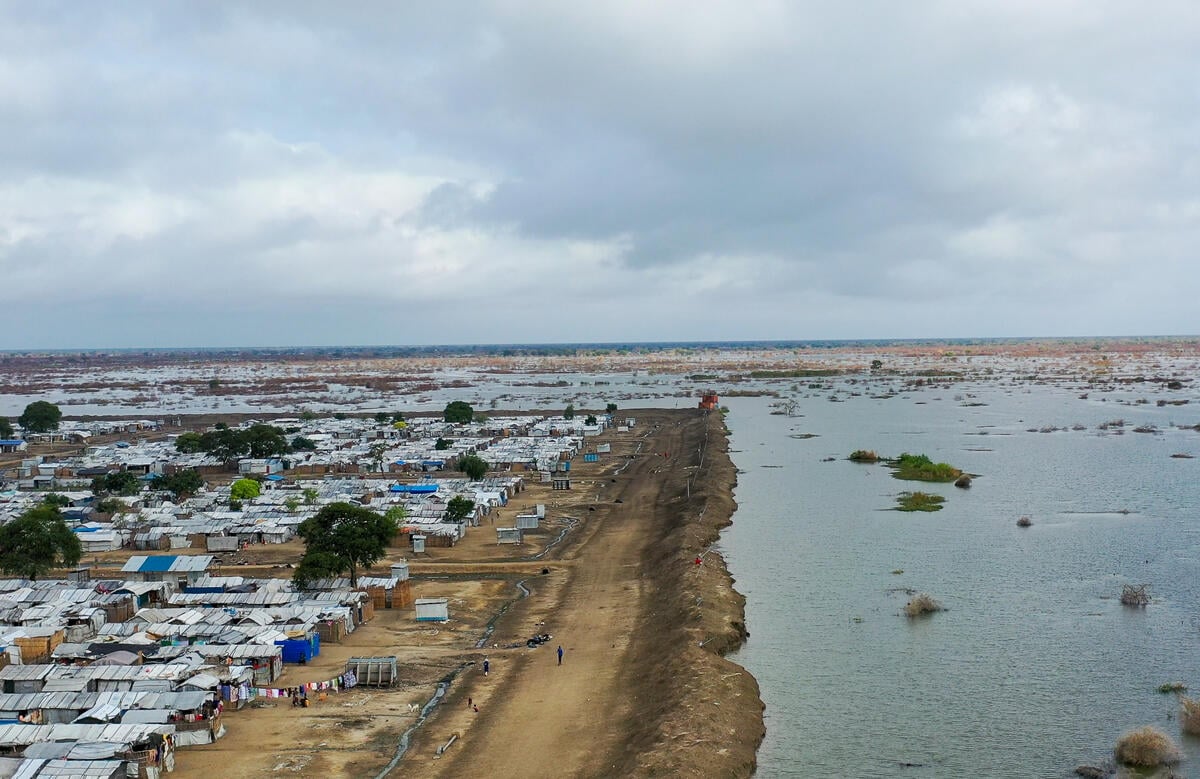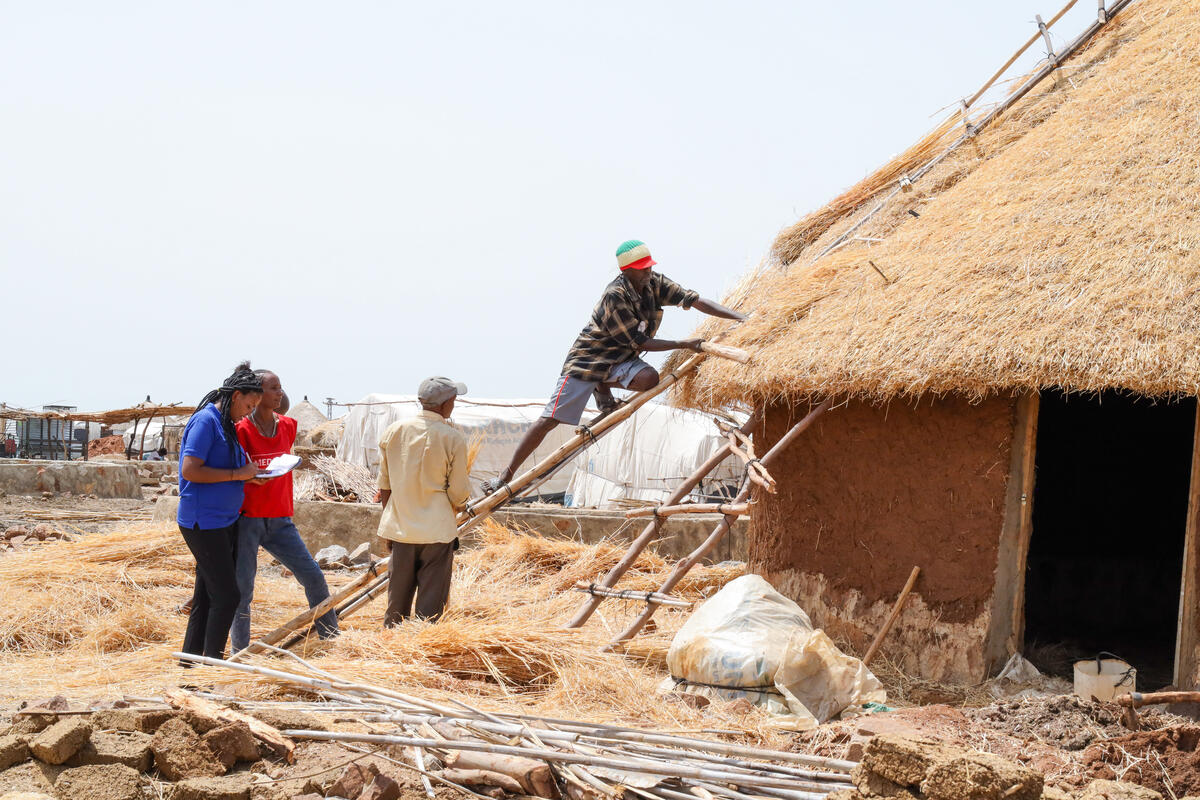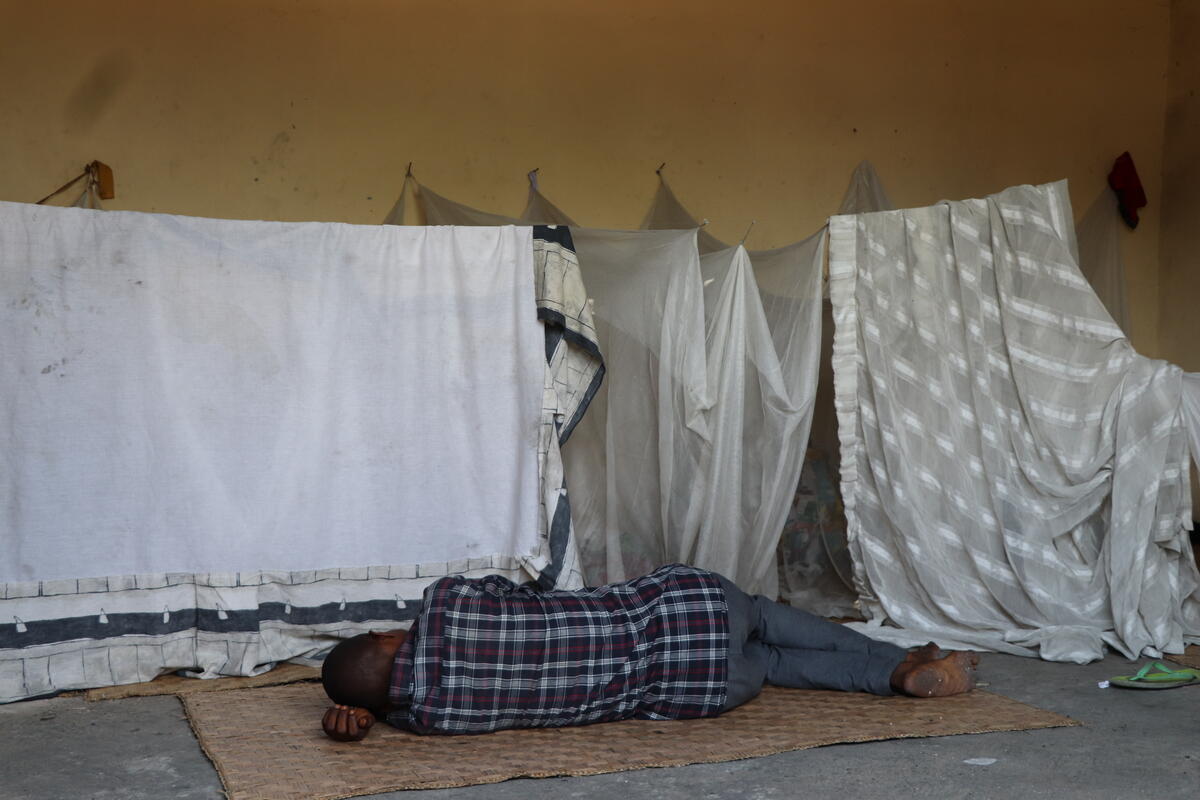Shelter project lets Dadaab's refugees swap twigs for bricks
Shelter project lets Dadaab's refugees swap twigs for bricks

DADAAB, Kenya (UNHCR) - Imagine living in a small hut that collapses under heavy rain, and sharing a door-less toilet with some 200 people.
For more than a decade, this has been a daily reality for more than 135,000 people at Dadaab refugee settlement in eastern Kenya. Many of them had fled war and atrocities in the Horn of Africa and arrived in this remote and arid area, only to suffer further indignities like poor housing and sanitation conditions.
"The state of shelter in Dadaab demonstrates how painful and diabolical the refugee experience can be," says UNHCR Representative in Kenya, George Okoth-Obbo. "Most of the refugees don't have a structure that affords them enough protection and privacy - all the things that a normal home should provide."
Across the three camps that make up Dadaab - Dagahaley, Hagadera and Ifo - most of the refugees live in makeshift shelters called tukuls, the dome-shaped grass-thatched structures used by Somali communities. These shelters provide little shade from the 40°C days and poor protection against the rainy season.
Last April, heavy rains destroyed over 600 shelters and left more than 3,000 refugees homeless in Dadaab. Even the food that had been distributed to them a few days before was washed away by flood waters.
"In Africa, rain has always been seen as a sign of blessing," says Dahir Mohamed, the chairman of Hagadera camp. "But in Dadaab rain is seen as a curse because water gets into the tukuls and destroys everything."
David Wahira was one of those affected. The Ugandan refugee, who had been separated from his wife on the way to Kenya, struggled with his only child through the flood. "I had to carry him on my shoulders, with a number of bags in my hands, to seek refuge at the UNHCR quarters," he recalls.
Over the years, living conditions have deteriorated below minimum acceptable standards. The crowded living spaces - each refugee is allocated less than 3 m2 - also make it easy for diseases to spread.
After years of fundraising efforts, the UN refugee agency collected enough money to start a pilot shelter project to build 1,500 housing units in Dadaab, replacing tukuls with houses that are hardier, more spacious and weather-proof.
Under the project, UNHCR and its partner CARE Canada provide gum poles, doors, windows, rafters, trusses and iron sheets for roofing. They also offer brick-making equipment and technical assistance to the community. The refugees are responsible for clearing, excavating, collecting water, making bricks and the overall construction.
Known as the Community Self Management System, this approach involves refugees in solving problems at all levels. They contribute unpaid manpower and skills towards the care and maintenance programme.
And for the first time in many years, the refugees are feeling optimistic that their lives in exile will improve as they wait for repatriation or some other form of intervention.
"This is a very nice programme since the house is firm and the veranda is big. Water will not wash away our shelter again," says Ugandan refugee Wahira as he puts the final touches on his house.
Priority for the new shelters has been given to vulnerable refugees like children, the elderly, the disabled, single women, widows and widowers - people who lack the social support to build their own shelter.
One of them is Gogode Adan Mohamed, a 21-year-old disabled refugee from Somalia. He cannot move around on his own, and has to be carried out of the tent. He spends most of his time indoors and is completely dependent, yet he also has to take care of his five siblings.

"I have been living in a tukul since I came here 12 years ago, exposed to insects and other animals," he says. "Now with this new house I am no longer afraid of them."
In addition to the new shelters, UNHCR's project also seeks to improve the poor sanitation facilities in Dadaab. Many of the latrines have flimsy walls and no doors. They do not last long because the screening material disintegrates after a short while, and the constant repair and reconstruction have had a negative impact on the environment.
Indirectly, inadequate toilet facilities have also deterred refugee girls from attending school. With a ratio of one latrine per 190 students, the stronger boys tend to push the girls away, sending them running home and making them miss lessons as a result. Their performance suffers at the end of the term.
The toilets now being built last longer and provide more space and privacy for the refugees. Improving such facilities in schools has also boosted the attendance and enrolment of girls.
By the end of February, 1,488 housing units had been completed for some 6,000 refugees. Another 1,575 toilets have been built for 10,000 people. By end of 2004, it is expected that another 3,000 improved shelters and latrines will be completed. But this still leaves a huge gap of 38,000 housing units that UNHCR hopes to fill gradually over a number of years.
Moodi Awori, Kenya's Vice-President and Minster for Home Affairs, has praised UNHCR and CARE's efforts to improve conditions in Dadaab. He has also appealed for help from development partners.
"What people must realise is that everyone can be a refugee. Refugees are not in this country because of their own choice," said Awori. "Refuge is not a new thing. People have been forced to flee since they started forming communities centuries ago. The tradition of offering sanctuary is almost as old as flight itself."
By helping refugees swap twigs for bricks, the Dadaab shelter project has become a concrete example of this tradition of sanctuary that is bringing a more dignified life to people so far away from home.








